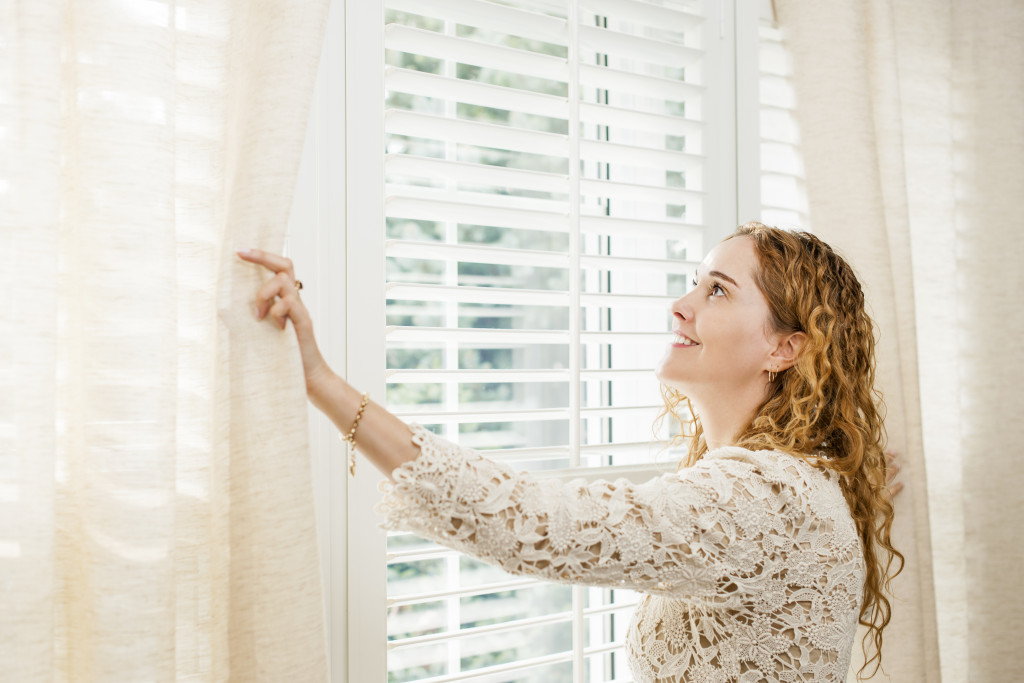One of the advantages of building a home instead of buying a built one is the ability to add elements that you’ve always wanted in your dream house. Unfortunately, many people forget to prioritize natural lighting.
It is essential to incorporate ways to maximize natural light in the spaces where you want it during the design phase. Adding them too far in the process can be time-consuming and stressful.
Exposure to sunlight has been proven to improve well-being. A well-lit home can make rooms and areas larger. Whether you’re in the design phase or rebuilding a home, adding more natural light should be your priority to reap all of these benefits.
These tips are good ways to start to help you build your home that invites in more natural light:
Position Your Home to Face the Sun
During the design phase, place your living room, kitchen, and dining areas in a position that faces the sun. These frequently used should receive an ample amount of sunlight. Create a priority list of rooms that need lots of sunlight to the least ones requiring only light.
If you’re unsure how to position rooms in your house, you can follow the advice of Utah State University’s Department of Environment and Society. According to them, living areas should face south if you’re living in the northern hemisphere. Service areas such as storage rooms, bathrooms, laundry rooms, and garages should face north.
In general, north-facing rooms get even natural light. South-facing rooms, meanwhile, get little direct sunlight in the summer months but allow winter sunlight. West-facing rooms, on the one hand, receive direct, early evening light. Finally, east-facing rooms get most of the morning sun.
Seasons Also Affect Position of the Sun
The changing seasons can also affect how the sun enters your home. Its position changes at different times of the year.
In summer, the sun is hot and high. You’ll need proper shades and window embellishments in rooms that receive summer sun. In winter, the sun is low. Windows receiving winter sun should be kept unobstructed while there is still light. When the weather gets cold and you’ll need to keep heat inside your home, windows should be kept shut.
Place Windows Strategically

The second-best way to allow more sunlight into any home is strategically placing glass sliding doors, skylights, glass blocks, and all kinds of windows. There should be more windows or glass sliding doors in your main living areas. For service rooms and bathrooms, skylights and glass blocks can do wonders.
Because of the additional lighting that windows provide, it’s essential to take care of them. Additionally, proper window maintenance can prevent dust and any residue from blocking glass windows. You can clean your windows yourself, but you should get the right window cleaning company to ensure a thorough job to service your windows.
Aside from letting more light in, windows and other similar elements connect your home to the outdoors.
Avoid Using Dark Tones for Interior Paint
For interior paint, use bright or light colors to make your home look more well-illuminated. Light and bright colors can reflect natural light into any room. It’s understandable, though, if you want to paint your bedrooms to a sleep-inducing interior paint. That will not be a problem.
The best choice for interior paint is white. However, you can choose any color as long as you don’t choose dark shades. Pastel colors are also great for interior paint. But if you don’t want your house to look too feminine, there are many options you can choose from. Light and bright paint come in many colors and shades.
For the type of paint, choose a glossy sheen. They can reflect light better than any other type of paint. Plus, shiny paint is easier to clean. You don’t have to hesitate to use them in high-traffic areas and in rooms where kids mostly play.
For your ceiling, though, it’s not necessary to use glossy paint. Because you don’t touch it often, you can stick to a matte finish.
Use Indoor Reflective Tiles
Mirrors are great reflective elements. However, you can’t use them on every surface. The next best thing you can use is glass or other reflective tiles such as glossy ceramic, subway, and metallic tiles. You can use reflective tiles on your floor, bathroom, and kitchen. Furthermore, you can install reflective tiles on your kitchen and bathroom backsplash.
Consider an Open-Plan Design
Aside from windows, reflective tiles, and bright paint, consider following an open-plan design. When there is an ease of flow in your communal areas, your space will look brighter. And if there is adequate natural light, you can even save on energy costs.
Don’t forget, prioritize incorporating natural light in the design phase. It’ll be more complicated or cost more to add these fixtures later when you have already built your house. Follow these tips, and you will surely have a well-lit home.

